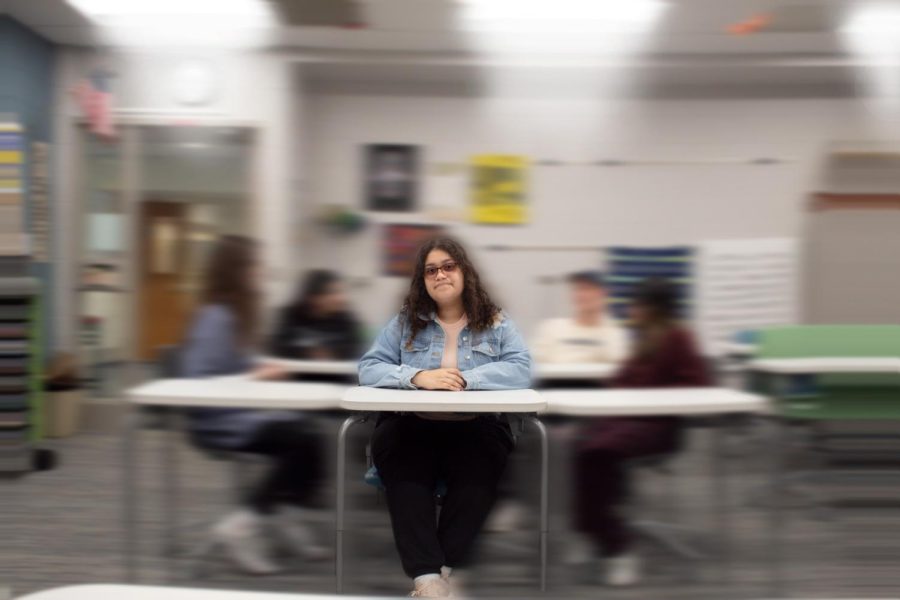Chronic conditions: students share stories
September 30, 2022
The first time senior Kaylee Calito noticed a migraine symptom, she was sitting at her freshmen assembly in 2019. She began feeling dizzy, and the entire left side of her body went numb. The trip to the Nurse’s Office kicked off what would become over two weeks of absences in the beginning of her freshman year, and a journey to learn how to navigate her newly apparent condition, chronic migraine with aura.
Chronic conditions and illnesses, defined as conditions that affect someone for a year or more, are experienced by over 40 percent of school-aged children, The Centers for Disease Control reports. These conditions, of which there are countless that affect each organ system, can drastically alter a person’s established routine, Calito explained.
“I had to completely change the way that I live my life,” Calito said. “I [can’t] go to parties, I [have] to limit my screen time, [and] I [have] to be careful what foods I eat.”
Dr. Jennifer Rubin, Pediatric Neurologist for Ann & Robert H. Lurie Children’s Hospital of Chicago, explained that a migraine is far more severe than a typical headache.
“About 25 percent of kids will seek medical attention for headaches, and by adolescence, 50 percent of people have experienced a headache,” Rubin said. “They’re very common, but migraines are a more severe type of headache, where you look sick, feel sick, can have nausea and vomiting, light sensitivity, [and] sound sensitivity, [all of which can] interfere with activities.”
Calito described that she experiences at least 15 migraines per month, which is why her condition is considered chronic. Calito’s condition has caused her to have an increased sensitivity to light, sound, certain foods, smell, and feeling, triggering the excruciating head pain that she experiences regularly along with her aura, which causes spots to appear in her vision, she explained.
“You can imagine a headache as a paper cut and a migraine as stabbing with a knife,” Calito said. “A paper cut has less consequences or side effects, whereas a wound [from a knife requires] a lot more healing.”
For the past three years, senior Ariana Raghian has experienced perpetual dizziness as a result of her chronic vertigo. Since this has begun, she has also developed a nystagmus, which causes involuntary shaking of the eyes. Her conditions, she explained, make reading, looking at screens, walking, and sleeping more difficult. However, she has not let these conditions interfere with her favorite activities, such as running and art, despite the added challenges that may arise.
“At some point [I decided that] I [wanted] to still live my life [but] not [make] every single living moment [about my condition],” Raghian said. “I had to find that balance.”
Rubin explained that chronic conditions usually occur in one of three ways: people may have been born with their condition, their condition emerged after trauma or injury, or their condition appeared spontaneously, without explanation. In any of the three ways, Rubin emphasized, chronic conditions can be difficult to manage and can potentially pose challenges to normal adolescent development.
“In general, being a teenager is tough,” Rubin said. “There [are] a lot of social and emotional changes and a lot of demands at school. So anytime you have a chronic condition on top of that, it can be challenging.”
Head Nurse Julie Shellard revealed that nearly 30 percent of students at South have a chronic condition. She explained that the school offers several accommodations to ease the difficulty of dealing with a chronic condition.
“Some students have what’s called a medical 504 Plan [and] we also offer something called the Nurse’s Office Pass,” Shellard said. “[The accommodations] level the playing field for students that might be struggling with a medical condition so that they can be achieving and performing [academically] in a way that is commensurate with their peers.”
Dr. Jason Canel, Pediatric Specialist for NorthShore University HealthSystem, expressed the importance that these accommodations have in helping students be successful in academics, but also highlighted the significance that compassion and understanding from peers can have in easing the social discomfort in dealing with a chronic condition.
“I try to encourage the person with [a] chronic illness to trust their friends and include them in their issues and troubles,” Canel said. “I [also] encourage [students] that have friends who have chronic illnesses to treat that person not as [someone] with [a] chronic illness, [but] as a person.”
Sophomore Isi Agustin was diagnosed with Juvenile Idiopathic Arthritis, a condition that causes joint swelling and pain, in May of 2021. Agustin encourages conversation surrounding chronic conditions, but asks that those inquiring remain respectful and mindful of the potential sensitivity of the topic.
“[When talking to] people with chronic conditions, [peers can] ask [about their condition], but [because they] want to learn, rather than pry,” Agustin said.
Raghian emphasized that chronic conditions affect everyone differently, and it’s important not to assume anything about someone else’s experience.
“Not all conditions are visible, and everyone’s normal is different,” Raghian said.



